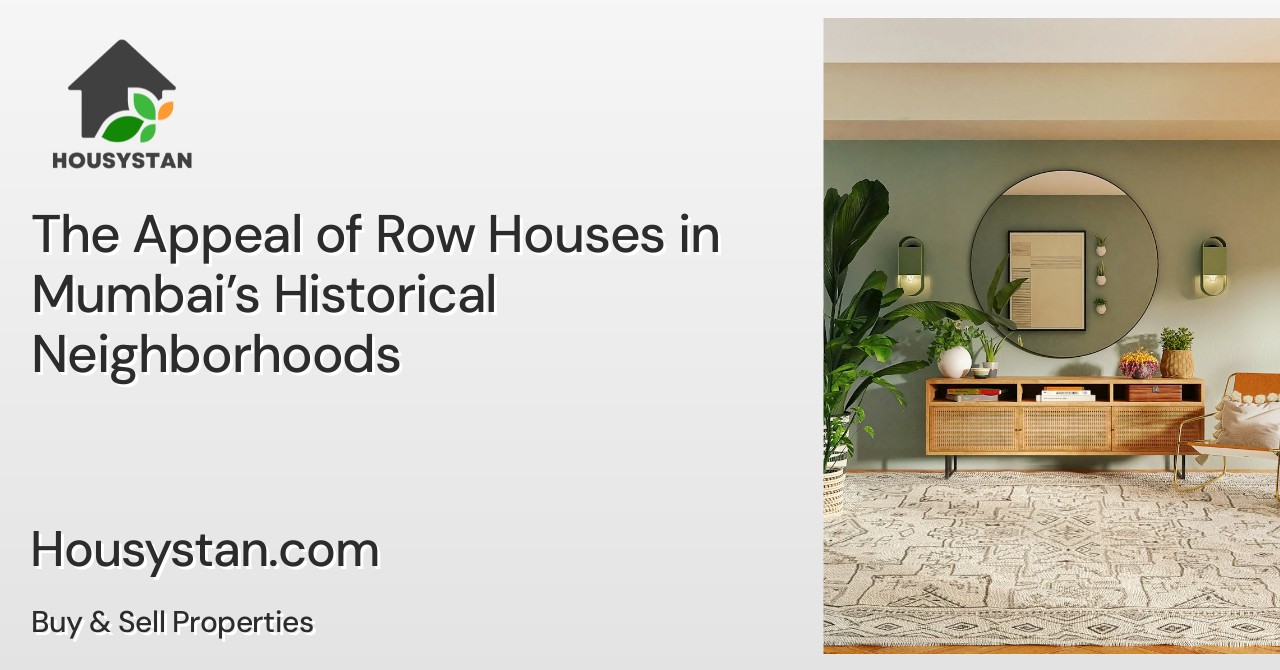The Appeal of Row Houses in Mumbai’s Historical Neighborhoods
Read latest blogs and articles from Housystan

The Information mentioned here was last updated on:
9/1/2026The Allure of Row Houses in Mumbai’s Historic Neighborhoods
Mumbai, known as the City of Dreams, is celebrated for its diverse architectural landscape. Among its many treasures, the row houses nestled within the city’s historic neighborhoods stand out for their unique charm and cultural significance. These homes, often found in areas like Bandra, Dadar, and Byculla, offer a distinct living experience, blending old-world elegance with modern conveniences. For those seeking a property that reflects Mumbai’s rich heritage while providing a sense of community, row houses in these established localities represent an exceptional choice.
Row houses in Mumbai’s older districts are cherished for their distinctive facades, intricate woodwork, and spacious layouts. Each residence typically features a compact front yard, high ceilings, and verandas that foster neighborly interactions. Unlike high-rise apartments, these homes provide privacy and a peaceful environment amidst the city’s vibrant energy. The presence of mature trees and well-maintained streets enhances the neighborhood’s aesthetic appeal, making it an attractive option for families and professionals alike.
- Verified Tenants/Buyers
- Unlimited Property Listing
- Zero subscription/charges fee
Many of these row houses are situated within walking distance of local markets, reputed schools, places of worship, and public transportation hubs. This convenience ensures residents enjoy easy access to everyday essentials while remaining connected to Mumbai’s commercial and cultural centers. Moreover, the strong sense of community within these neighborhoods encourages social engagement and long-lasting relationships among residents, fostering a warm and inviting atmosphere.
Preserving these historic row houses also contributes to Mumbai’s urban heritage, as they embody architectural traditions that date back several decades. Investing in such properties not only secures a unique living space but also plays a role in protecting the city’s legacy for future generations. As demand for homes with character and history continues to rise, row houses in Mumbai’s historical areas present a rare opportunity for discerning buyers seeking a blend of tradition and modernity.
In summary, choosing a row house in Mumbai’s iconic neighborhoods offers more than just a place to live—it provides a lifestyle rooted in history, convenience, and community. With their unmatched character and strategic locations, these properties remain a preferred option for those looking to experience the true essence of Mumbai living.